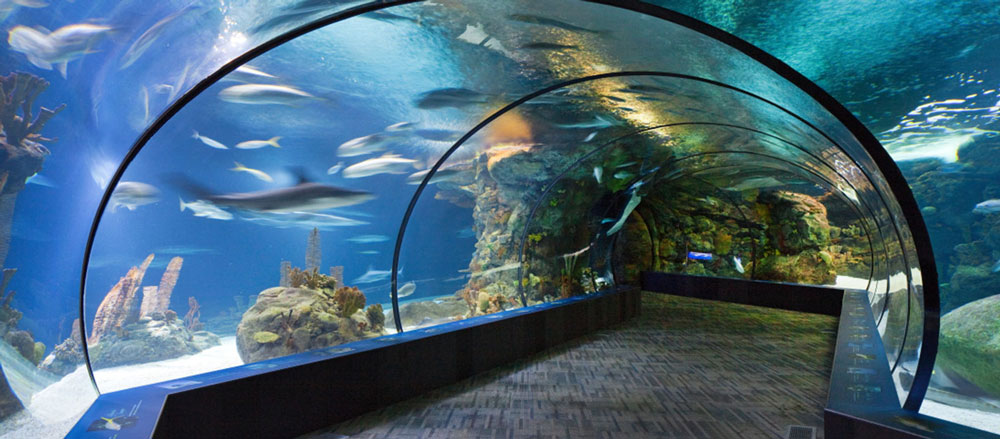Introduction
Omaha’s Henry Doorly Zoo & Aquarium is no ordinary wildlife preserve. It’s a place where visitors get to immerse themselves in environments that mimic the natural habitats of the animals it shelters, be it the grasslands of Africa or the coasts of Alaska. The 1890s saw the humble beginnings of what was then known as Riverview Zoo with just 120 animals. Today, it’s a vibrant community all on its own, sometimes surpassing the population of Nebraska’s cities (barring Omaha, Lincoln, Bellevue, and Grand Island) on a busy weekend.
This feature aims to give you an in-depth look at the remarkable transformation of this iconic institution under the stewardship of Dennis Pate, its president and CEO, who is retiring this year. With Pate at the helm, Henry Doorly Zoo & Aquarium has become a testament to how vision, planning, and community involvement can make an organization truly world-class.
History Revisited
Before we delve into the recent revamps, let’s retrace the path that led to today’s Henry Doorly Zoo. The legacy began modestly, evolving from its initial 120 animals as Riverview Zoo to an extensive facility with over 30,000 creatures. Dr. Lee Simmons took the zoo to new heights, and Pate built upon his successes when he arrived in 2009.
Fun Fact: The zoo was renamed in honor of Henry Doorly, chairman of the Omaha World-Herald, by his wife, Margaret Hitchcock Doorly, after a significant donation.
Dennis Pate: A Man of Vision
Dennis Pate’s journey began as a zookeeper in Chicago, wound its way through Portland, Oregon, Jacksonville, Florida, and ultimately led him to Omaha. Pate announced his retirement on February 14, 2023, after successfully overseeing a multi-phase development plan that took nearly $195 million and several years to complete.
“Plans are only as good as their execution, and I’m pleased to say we’ve seen our vision through,” said Pate, looking out of his office window at the Robert B. Daugherty Education Center, which itself is a beacon of the zoo’s educational outreach.
The Master Plan
Started in 2010, the original goal was set at $175 million for improvement. It became apparent during the journey that some adjustments and increases in investment were necessary. This included a particularly monumental undertaking – the $71 million African Grasslands exhibit which opened in 2016.
The original blueprint even had to forego some projects to prioritize utility issues that arose unexpectedly. “Construction is rife with unknowns; you make adjustments as you go,” said Pate. But at the end of it all, the zoo has “done more exhibits, more construction, and raised more money than any other zoo in the United States,” Pate added.
Glacier Bay Landing
Pate’s most recent accomplishment, Glacier Bay Landing, serves as the new northern entrance to the zoo. Shaped like an Alaskan coastal town, this section features 1890s-era false-front buildings, new food menu items, and even a colorful merry-go-round, Sue’s Wildlife Carousel. It’s more than just an attraction; it’s an experience.
The Daugherty Education Center
Not just a sanctuary for animals, the zoo has evolved into a learning hub with the 42,000-square-foot Daugherty Education Center. The facility accommodates high-schoolers offering courses with a focus on biological programs and even has a few pre-K and kindergarten classes.
The educational programs have taken a multidisciplinary approach, involving the zoo’s curators, Ph.D. researchers, and veterinarians. “We have students from eight school districts. This isn’t supplementary education; it’s their full day,” said Pate.
Navigating Challenges: The Pandemic and Beyond
The pandemic dealt a heavy blow, costing the zoo 44% of its revenue and 54% of its attendance in 2020, translating to a loss of over $20 million. The zoo’s unwavering commitment to animal welfare meant that they had to find ways to cope without compromising care for their inhabitants.
Federal grants and generous community donations helped salvage the situation, and things have looked up in 2021. With 1.68 million people walking through their gates last year, the zoo is on a slow but steady path to recovery.
Sustainability and Inclusivity
Amidst all these developments, sustainability and accessibility haven’t been overlooked. The zoo is ADA compliant throughout, has increased the number of benches, improved lighting, and has shifted to more efficient buildings, thus reflecting a commitment to being inclusive and environmentally responsible.
Economic and Social Impact
“Roughly a third of our attendance comes from out-of-state,” Pate said. This isn’t just good for the zoo but also boosts local tourism. The zoo generates an estimated $267 million annually for the community, a true win-win for everyone involved.
Epilogue
As Pate prepares to step down, he reflects on his time at the Henry Doorly Zoo. “I’m retiring, but the zoo isn’t,” he said with a chuckle. “It will continue to evolve and continue to be a point of pride for Omaha and the whole of Nebraska.”
The legacy of Omaha’s Henry Doorly Zoo & Aquarium will indeed continue. It stands as a testament to the transformative power of vision, meticulous planning, and community involvement, a thriving intersection of conservation, education, and recreation. Whether you are a first-time visitor or a regular guest, you’re bound to discover something new and wonderous on each visit, and that is what makes this place truly extraordinary.

